Medieval Castles: Shell Keep — Part #3
Many of us from time to time, need to make short-term decisions to solve immediate problems – I’m sure that you’ll relate. Our Medieval counterparts faced these same issues – however, unlike our lives today, often their decisions came down to life or death.
Let’s imagine for a moment that you’re a feudal lord living in a Motte and Bailey castle. Your wooden keep had withstood a few attacks, but you’re fearful that the next attack will destroy it. You don’t have the time or money to tear down the existing keep and rebuild it with a stone one. Not to mention, you’re on a man-made motte and you know the hill can’t support the weight of a stone keep.
What would you do? The wrong choice and you could have been overtaken and killed or forced to become a slave for your enemy…
Welcome to Part 3 of the Medieval Castle series where we’ll discover the Shell Keep castle design. If you’re new to the series, welcome! Here you can follow each article in the series as it’s published.
- Medieval Castles: Almost everything you wanted to know – Part 1
- Medieval Castles: Motte and Bailey – Part 2
- Medieval Castles: Shell Keep – Part 3
- Medieval Castles: Stone Keep – Part 4
- Medieval Castles: Concentric – Part 5
- Medieval Castles: List
Medieval Castles: Different types of Architecture
What is a Shell Keep?
The Shell Keep or donjon annulaire in French, design is a thin stone ‘curtain’ on top of the existing wooden keep of the Motte and Bailey design. For keeps built on larger mottes, a smaller stone wall called a chemise, can be built around the bottom of the shell as an added layer of security.
The shell is built up against the outside wall of the existing wooden keep, and smaller, wooden buildings are built against the inside wall, creating a courtyard inside the structure.
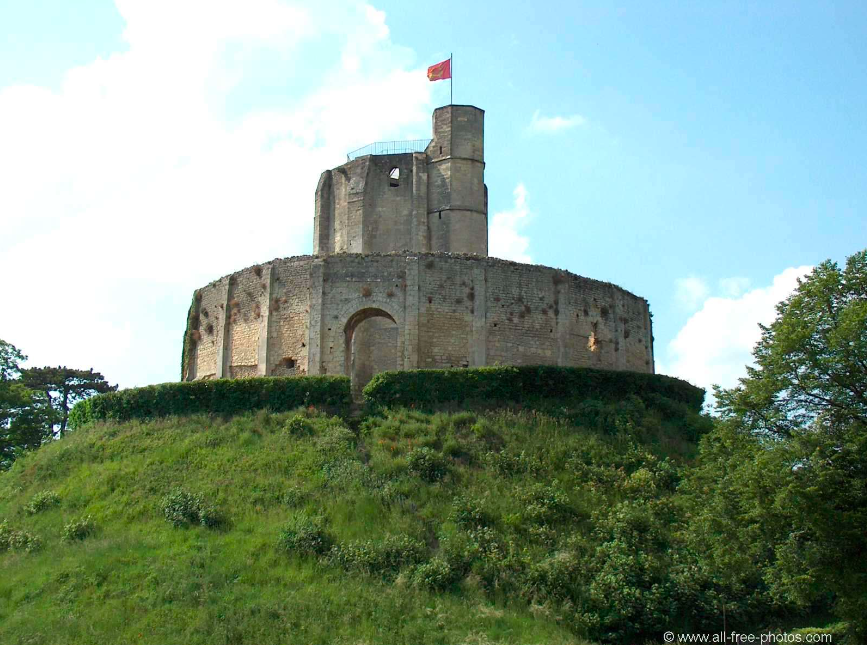
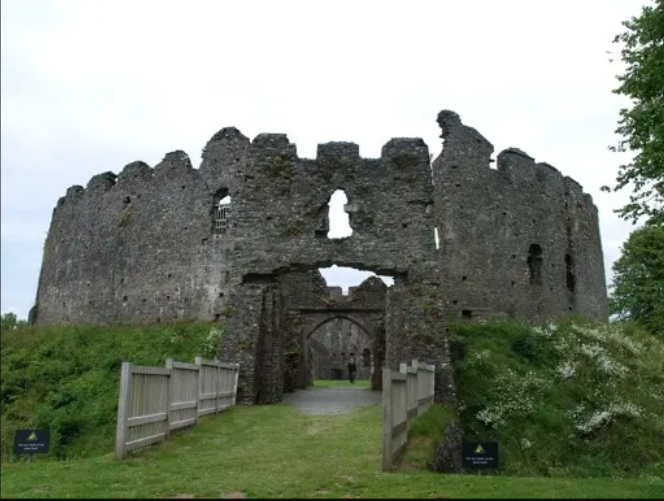
Castle Construction
This design is known for its simplicity and availability of building materials. Initially, mud bricks formed the ‘shell’, but builders eventually turned to using stones.
Castle History
The Emergence and Decline of the Design
The Normans built roughly 700 Motte and Bailey castles in England between 1066 and 1087, so many believe the first shell keeps were built there as well. As a result, most Shell Keep castles, or what’s left of them, are in England; however, there are a few examples of them in France and Holland.
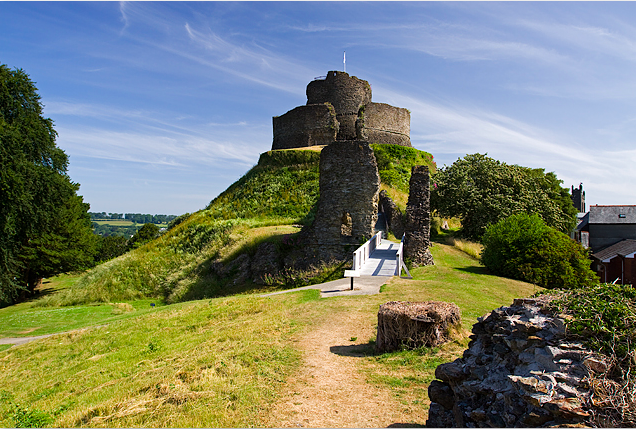
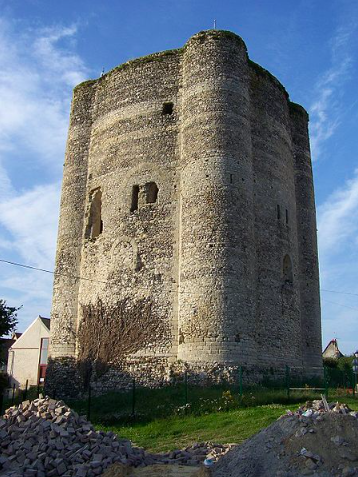
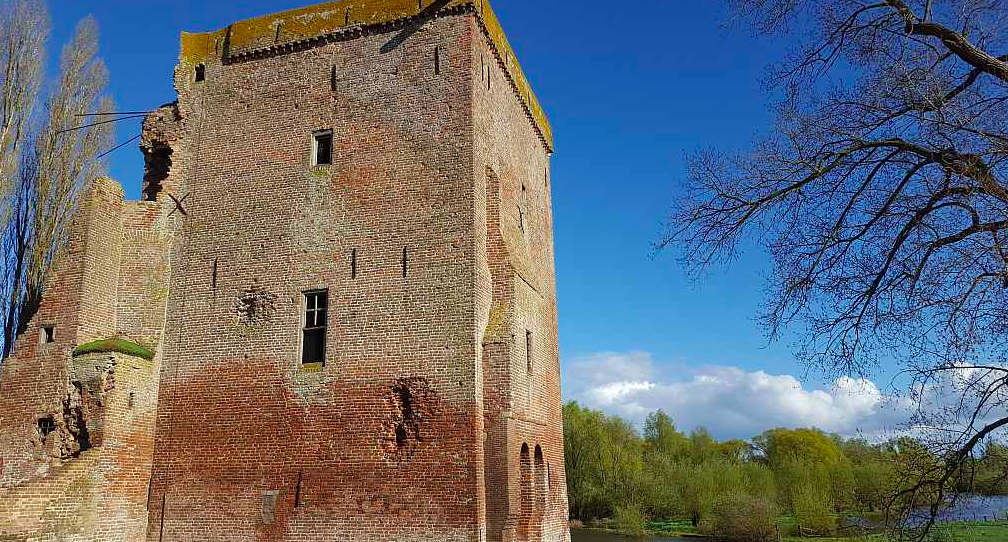
The goal of the Shell Keep design is to make the existing keep stronger as quickly and cheaply, as possible. A short-term solution to an immediate problem.
Although the shell was thin, builders still worried the additional weight of the shells increased the chances of the motte collapsing. As a result, very few Shell Keep castles were built, and by the 1200s, the design was gone.
Pros and Cons of the Shell Keep Design
Pros
Shell Keeps were cheap to build and could be built fast, making them attractive to builders.
Since the ‘shell’ covers the existing wooden Motte tower, less material is needed, and the project could be finished in much less time than it would take to construct a new tower. This is especially important when an enemy could attack at any time.
Another pro is a stronger Keep increased overall security of the existing tower. Assuming there were no added walls, such as the chemise mentioned above, enemies would now need to get through two walls to get into the courtyard.
Cons
Shell Keeps were a quick fix. Unfortunately, the stones used to build the shell couldn’t be too big or heavy or they would crush the motte on which the tower was built. Man-made mottes increased the risk of collapse.
Shell Keep Castles Today
Its disadvantages made the design short-lived, which is why few Shell Keep castles remain today; with most of them being in England. Although there aren’t many, there are some Shell Keeps castles you may have heard of.
England
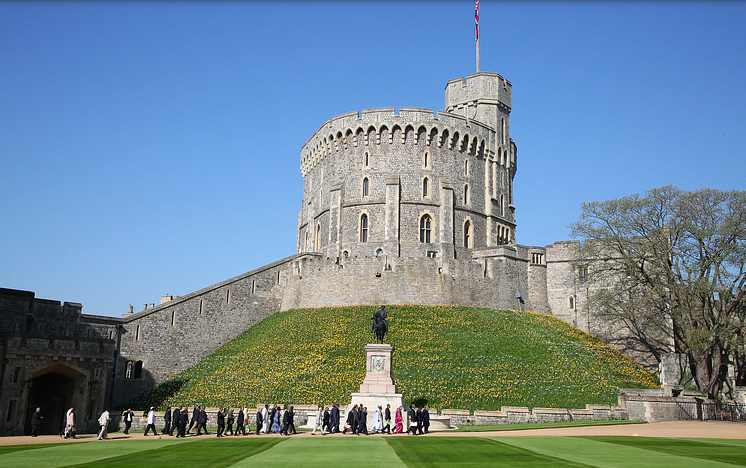
One of the most famous Shell Keep castles still standing today is the Round Tower of Windsor Castle. The castle is and has been, the backdrop of many historical events over the last one thousand years. The most recent events include the Duke and Duchess of Sussex’s wedding, and where Her Majesty, Queen Elizabeth II, and the Duke of Edinburgh are buried.
France



Also at Chateau D’Angers – Did You Know?
Château D’Angers is home to the Apocalypse Tapestry. Considered one of the oldest tapestries in existence. It’s a set of six panels, woven in Paris between 1377 and 1382, depicting the Apocalypse in the Book of Revelations, as written by Saint John the Devine.
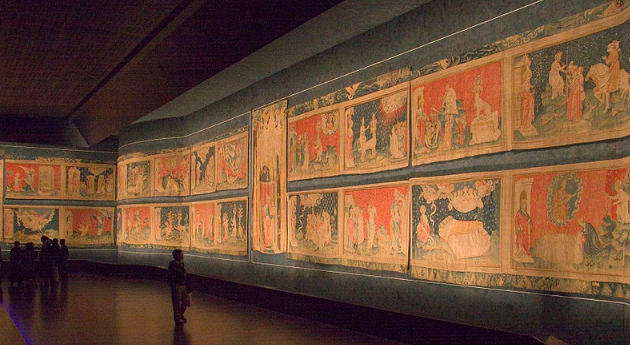
I hope you enjoyed learning about Shell Keep castles. Join us next time for Part 4 of the Medieval Castles series.
Did you previously know about Shell Keep castles? Have you visited any? Please share your experiences below in the comments.
Image credits
1. Château de Gisors via All-Free-Photos
2. Restormel Castle via Exploring Castles by ©Carol Ine
3. Launceston Castle via geograph.org.uk by ©Mike Searle
4. Houdan Donjon via commons.wikimedia.org
5. Ruin de Nijenbeek via Mijngelderland.nl
6. Windsor Castle via worldhistory.org
7. Château de Brest via commons.wikimedia.org
8. Donjon Lillebonne via commons.wikimedia.org
9. Château D’Angers via commons.wikimedia.org
10. Apocalypse Tapestry via commons.wikimedia.org by Kimon Berlin, user: Gribeco






